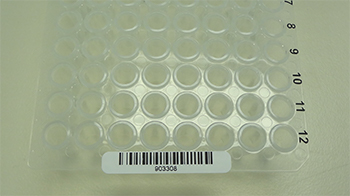 As proud as we are of all our freezer labels, we know that some of them aren’t sufficient for truly deep levels of cold, like those found in cryogenic medical or scientific laboratories. That’s why we also offer a line of cryogenic labels, both blank and printed to your specifications.
As proud as we are of all our freezer labels, we know that some of them aren’t sufficient for truly deep levels of cold, like those found in cryogenic medical or scientific laboratories. That’s why we also offer a line of cryogenic labels, both blank and printed to your specifications.
These specialty freezer labels are almost as interesting as what they label, being as far beyond our regular frozen vegetables and ice cream labels as those freezer labels are beyond everyday normal-temperature labels. Cryogenics labels must be extremely durable, with cold-fighting materials including a very high-tack adhesive that the cold won’t touch—one that can, in fact, be applied in very low-level temperatures. Ours at Freezer-Labels.com can easily handle temperatures down to -112° F (the freezing point of dry ice, a.k.a. solid carbon dioxide) without slippage or breaking, and can be applied to almost any standard surface at temperatures down to -20° F.
That’s pretty impressive… but what’s really cool is what they’re used for. Scientific equipment, from freezers to test equipment, are common targets; so are the test tubes that go in those freezers. Often, these contain biological materials, like tissue samples and genetic samples. All biological activity ceases at -136˚ C (-213˚ F), and it slows way down prior to that; some samples can be revived, but others are preserved for further study.
Some hopeful people have even elected to be frozen after death, just in case they can be revived and cured of whatever killed them at some time in the future. The oldest known cryogenically frozen person passed away of cancer that had metastasized to his lungs in 1967. At the time, that wasn’t treatable. While it is now, there’s still no guarantee that he could beat it, and in any case we’re not quite sure how to thaw someone out and bring them back to life quite yet. The “antifreeze” this gentleman was injected with at the time was crude, and many of his cells have no doubt ruptured due to ice crystal formation. That said, he’s remained frozen solid for over 50 years. Maybe someday, nanotechnology may help revive him. One thing we do know is that, having been moved several times during his death, he probably has a nice collection of cryogenic labels by now.
Sperm, eggs, and even embryos are also stored in fertility clinics by people who want to have children and have trouble doing so the normal way. Animal samples of the same materials are also frequently frozen for experimental or reproductive reasons. Such samples also need dependable cryogenic labels. As you can imagine, any slippage or loss of tack of such cryogenic labels would be nothing less than catastrophic. These particular freezer labels also need to be able to adhere to all sorts of materials, including steel, aluminum, cold-resistant plastics, glass, and whatever other materials scientists use or may yet invent for cryogenics use.
Very cold temperatures are also effective for studying some electrical reactions in metals. At extremely low temperatures, some materials become electric superconductors, which are crucial to supercomputers and other electronic devices. Until we can reliably produce room-temperature superconductors, the equipment these scientist use will need dependable cryogenic labels.






